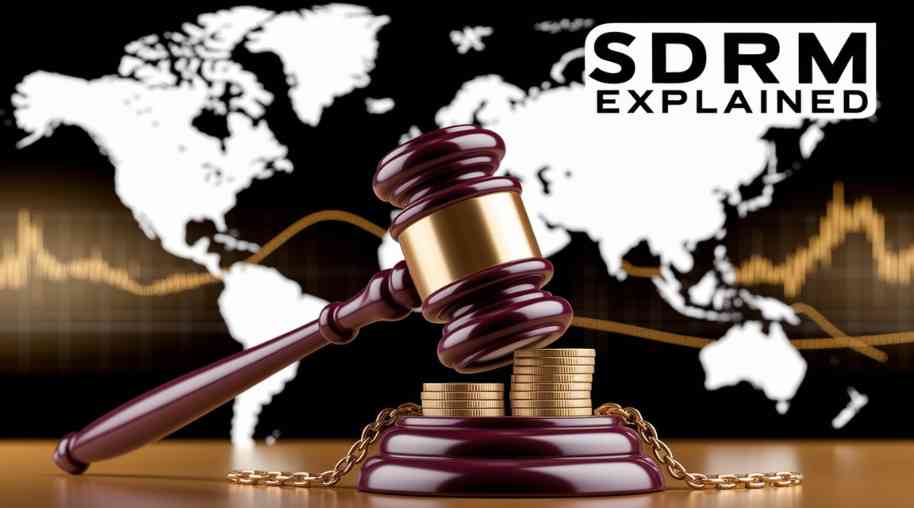SDRM Full Form-Sovereign Debt Restructuring Mechanism
by Shashi Gaherwar
0 1051
Sovereign Debt Restructuring Mechanism: Managing Debt Crises Efficiently
Sovereign debt crises have historically posed significant threats to global financial stability. Many countries struggle with mounting debts, leading to economic stagnation and financial instability. The Sovereign Debt Restructuring Mechanism (SDRM), proposed by the International Monetary Fund (IMF), is a structured framework to manage debt crises and promote financial recovery.

Understanding the Sovereign Debt Restructuring Mechanism
The Sovereign Debt Restructuring Mechanism (SDRM) is a legal and financial framework designed to facilitate the restructuring of sovereign debt in an orderly and efficient manner. It provides debtor nations with a structured approach to negotiate debt relief with creditors while maintaining financial stability.
Objectives of SDRM
- Prevent financial crises arising from excessive sovereign debt.
- Ensure an efficient, fair, and transparent debt restructuring process.
- Reduce legal disputes between debtor nations and creditors.
- Promote economic stability and sustainable debt management.
How the SDRM Works
The Sovereign Debt Restructuring Mechanism functions through a structured process involving multiple stakeholders:
- Debt Assessment and Crisis Identification: The IMF or an independent financial body assesses a country’s debt sustainability. If a country is deemed unable to meet its debt obligations, the SDRM is activated.
- Standstill on Debt Payments: A temporary moratorium on debt payments may be imposed to prevent economic collapse, giving the debtor country time to negotiate new terms with creditors.
- Negotiation and Agreement: Creditors and the debtor nation engage in negotiations facilitated by an independent oversight body. Debt restructuring terms, such as extensions, interest rate reductions, or partial debt cancellations, are agreed upon.
- Legal and Financial Implementation: The final agreement is legally binding, ensuring compliance by both parties. Debt repayment resumes under the newly restructured terms.
Importance of SDRM in Debt Crisis Management
- Ensuring Financial Stability: Prevents economic collapse by allowing structured debt repayment and encourages investor confidence in sovereign markets.
- Facilitating Fair and Efficient Debt Settlements: Provides a structured legal framework that protects both creditors and debtors, reducing prolonged legal disputes and uncertainty.
- Supporting Economic Recovery: Frees up resources for critical public investments such as healthcare and infrastructure, encouraging sustainable economic growth and reducing reliance on emergency bailouts.
Challenges and Criticisms of SDRM
Despite its benefits, the Sovereign Debt Restructuring Mechanism faces several challenges:
- Lack of Universal Acceptance: Some creditor nations and institutions oppose a centralized restructuring process, and private lenders may be reluctant to participate in IMF-led negotiations.
- Complex Legal and Political Issues: Sovereign debt restructuring involves multiple legal jurisdictions, making agreements difficult. Political factors often delay necessary actions.
- Risk of Moral Hazard: Countries may become reliant on debt restructuring rather than implementing sustainable financial policies. Creditors may perceive SDRM as reducing their repayment prospects, leading to reduced lending.
Recent Developments in Sovereign Debt Restructuring
- COVID-19 and Global Debt Challenges: The pandemic led to an increase in sovereign debt levels, especially in developing nations. The IMF and World Bank launched debt relief programs, highlighting the need for a structured SDRM.
- G20 Common Framework: The G20 introduced a debt relief initiative for low-income countries, resembling aspects of SDRM, aiming to enhance coordination between public and private creditors.
- Digitalization and Debt Management: Advanced technologies, including blockchain-based financial tracking, are being explored to enhance transparency in debt restructuring agreements.
Future of the Sovereign Debt Restructuring Mechanism
The Sovereign Debt Restructuring Mechanism remains a debated topic in international finance, but its role is likely to evolve in response to increasing global debt burdens. Potential improvements include:
- Enhanced creditor participation mechanisms to ensure private sector involvement.
- Stronger legal frameworks to streamline negotiations.
- Integration with sustainable finance initiatives to encourage responsible lending and borrowing practices.
The Sovereign Debt Restructuring Mechanism (SDRM) provides a structured approach to resolving sovereign debt crises, ensuring financial stability and economic recovery. While challenges remain, its adoption could lead to more efficient, fair, and transparent debt management in the global economy. With ongoing developments in international finance, SDRM may play a key role in shaping future debt resolution frameworks.
Further Learning Resources
If you’re passionate about building a successful blogging website, check out this helpful guide at Coding Tag – How to Start a Successful Blog. It offers practical steps and expert tips to kickstart your blogging journey!
For dedicated UPSC exam preparation, we highly recommend visiting www.iasmania.com. It offers well-structured resources, current affairs, and subject-wise notes tailored specifically for aspirants. Start your journey today!

Share:








Comments
Waiting for your comments